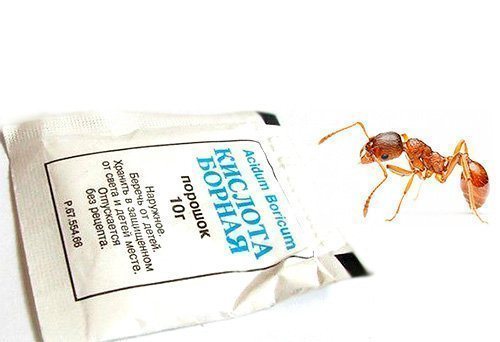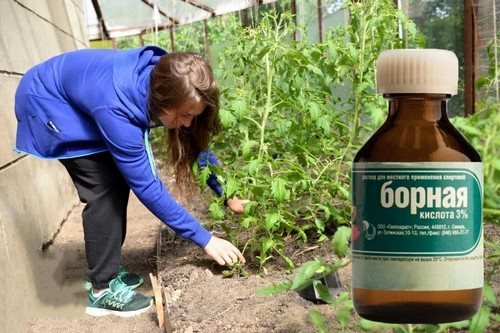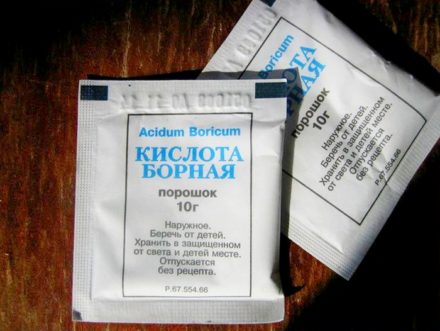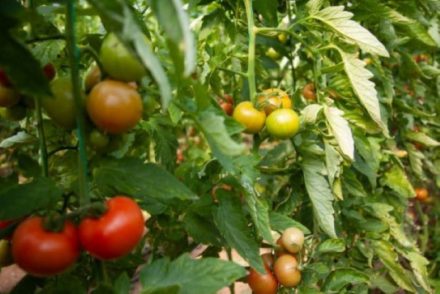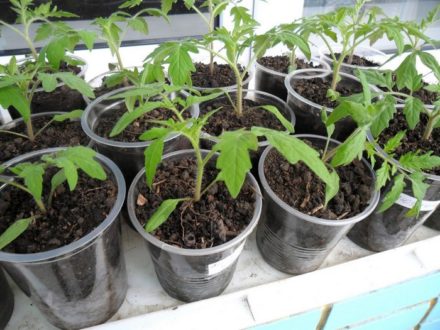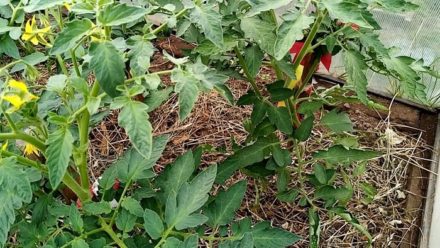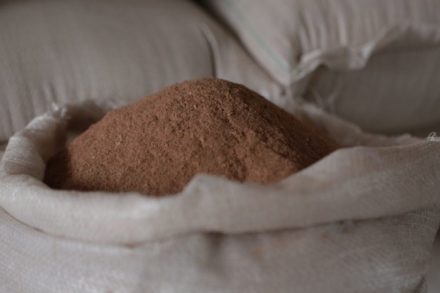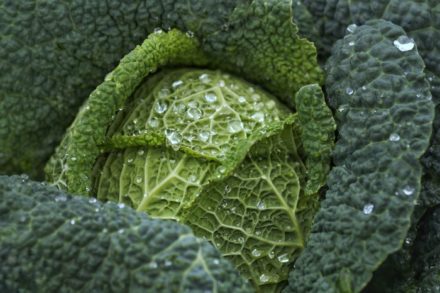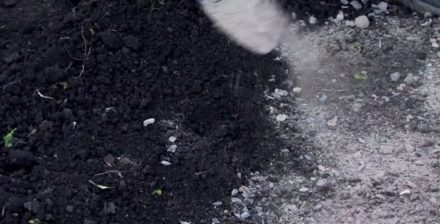Boric acid is used in gardening as a stimulator of flowering and fruit formation. If tomatoes lack boron, the ovary is formed in smaller quantities and partially falls off. To carry out spraying with the greatest efficiency, you need to follow a few simple rules and avoid mistakes.
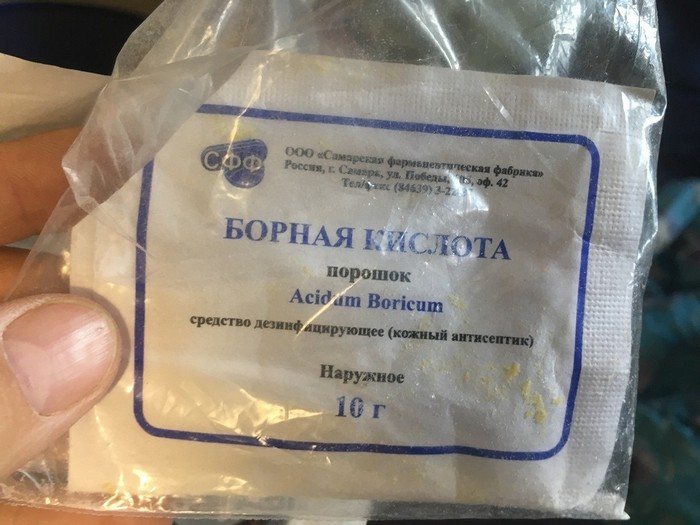
Dosage for foliar spraying
Since boric acid is a caustic drug, it is necessary to observe the dosage when using it. Otherwise, burns will remain on the leaves after spraying. Foliar feeding has a stimulating effect on the formation of the ovary.
To spray tomatoes, prepare a standard solution - 1 tsp. boric acid (without slide) per 10 liters of warm water. Since the crystals are sparingly soluble in water, first they are diluted with a small amount of hot liquid (200 ml). Stir the mixture until even the smallest particles disappear.
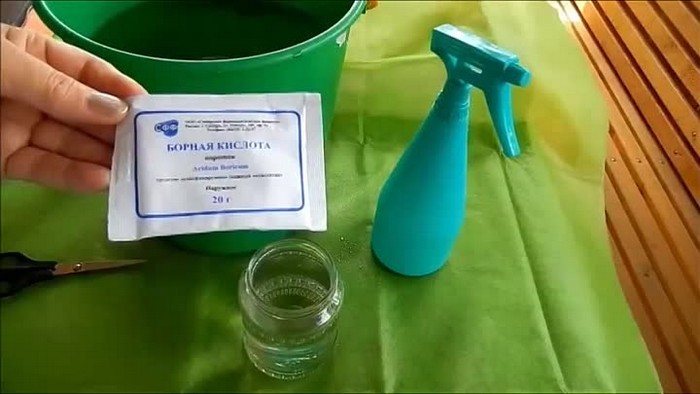
Application diagram
Fertilizing with boric acid alone will not be enough. The drug is used according to a certain scheme, spraying three times:
- when will the first buds form?
- in the active flowering phase;
- after the formation of ovaries.
In this case, the general condition of the plants and the method of growing tomatoes are taken into account. Three is the minimum number of treatments; if necessary, increase it.Leaf treatment is especially indicated for those plants that bloom but do not form an ovary. This situation occurs with a slight boron deficiency.
If tomatoes do not make up for the deficiency of the element, the symptoms will worsen. The tops of the shoots begin to lighten and curl downwards, the growing point dies, the lower leaf plates become dark and fragile, and stepsons grow abundantly on the bushes. In all these cases, treatment with a boric acid solution is urgently needed.

Proportions for root feeding
For root feeding, use 2.5-3 g of powder, diluting it in 10 liters of hot water. The drug, available in gardening stores, is sold in packages weighing 10 g. This amount is enough for foliar and root feeding.
Boric acid from the pharmacy is difficult to dissolve, but the powder intended for use in gardening dissolves quickly and effortlessly in water at room temperature.
An overdose of boron is no less dangerous for tomatoes, as is a deficiency of the microelement. In this case, symptoms of damage appear such as gloss and brown spots on the leaves, and the leaf plates acquire a dome-shaped shape. Later, the spots grow and the leaves die.

Rules for using boric acid for tomatoes
To spray on the leaves, you will need a fine sprayer, which during operation creates a mist of tiny droplets of solution. Large drops, even with the correct dosage of boric acid, can leave burns on the leaves.
When spraying, the shoots are lifted by hand to provide access to the back side of the leaf plates. The composition should cover the entire plant. In the absence of obvious signs of boron deficiency, treatment is carried out no more than once every 2 weeks, starting from the moment of budding.
Start feeding in the morning or evening, on a dry, windless day. In this case, the solution is better absorbed by the leaves. The temperature of the liquid should be approximately equal to the air temperature; the temperature difference will cause stress in the plants.
Experienced gardeners first spray only one plant. If there is no negative reaction, all plantings are treated. When applying a solution of boric acid under the root, 0.5 liters of fertilizer are used for each bush.
For greenhouse tomatoes, boric acid treatment is more important due to difficulties with pollination in an enclosed space. If fertilizing with boron is carried out in a greenhouse, use a less concentrated solution.

Possible mistakes
Mistakes made when adding boric acid can ruin all efforts to grow tomatoes. Most often, gardeners make the same mistakes. Here's what to pay attention to:
- Do not spray seedlings with boric acid. Young plants are not yet strong enough and can be easily destroyed even if the dosage of the drug is slightly exceeded. If the bushes look frail, it is better to use a complex fertilizer for feeding, which also contains boron in an amount safe for plants.
- A hot solution should not be used for both spraying and watering. You must first cool the composition so that its temperature is equal to the air temperature.
- If you spray in windy weather, the solution will dry out immediately without having time to be absorbed.
- There is no point in saving the remains of the solution until the next use. After a short time, the composition becomes useless for plants.
- In no case should you use a pharmacy alcohol solution of boric acid to treat tomatoes. Only a water-based composition is used for feeding.
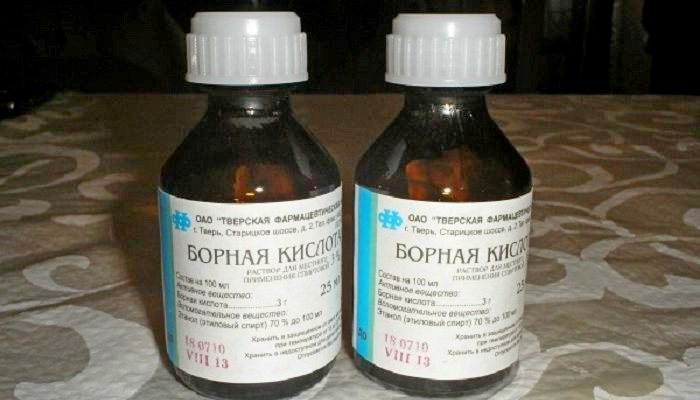
Feeding tomatoes with boric acid affects not only the quantity and quality of ovaries. The introduction of the drug helps to combat late blight, prevents fruit rotting during the rainy period, the taste of tomatoes becomes sweeter. The solution should be used in compliance with the dosage. According to the rules, work is carried out in closed clothing, glasses and a respirator.


